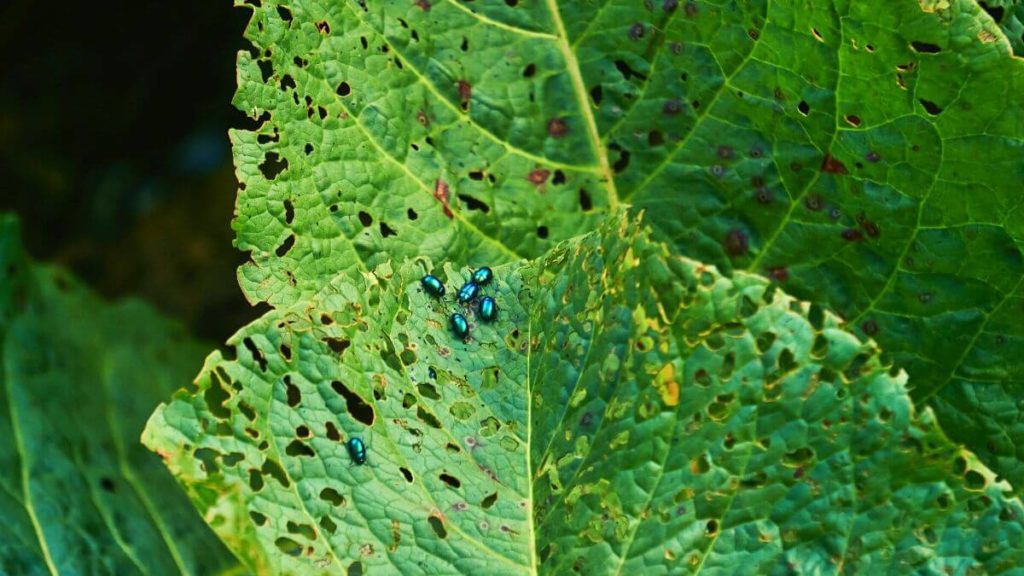
Flea Beetles are a large subfamily of small leaf beetles that eat on plant leaves, leaving behind a characteristic pattern of small holes that can damage or kill plants. They tend to prefer plants such as radish, broccoli, cabbage, and even arugula. Controlling them is challenging, but not impossible.
My first experience with flea beetles was noticing the damage they do. In my first real effort at vegetable gardening, I had innocently planted a row of half radish and half cabbage. Next to it, I planted a row of arugula. Little did I know I had just laid out the red carpet for these garden pests.
As the plants were just up from the soil, the young leaves looked like a small bandit rode through the garden row, using birdshot to blast lots of little holes in the plants. LOTS of little holes.
Looking closely, I could see them. Small, shiny, bluish black bugs that would spring off a leaf just as I was coming in to (ahem) remove them. I then realized they were all over these specific plants. I lost those rows that year. Thus began my quest to figure out how to deal with flea beetles organically.
How to Identify Flea Beetles
Flea beetles are often first recognized by the damage they do, a pattern of small holes in the leaves of new plants, then by their ability to jump like a flea and disappear before your eyes. There are different types of flea beetles. Some types of these beetles can also have yellow or white stripes on their back and vary in size. The ones I’m most familiar with in New England are about 1/8 of an inch long, are shiny and black, and have an oval appearance from above.
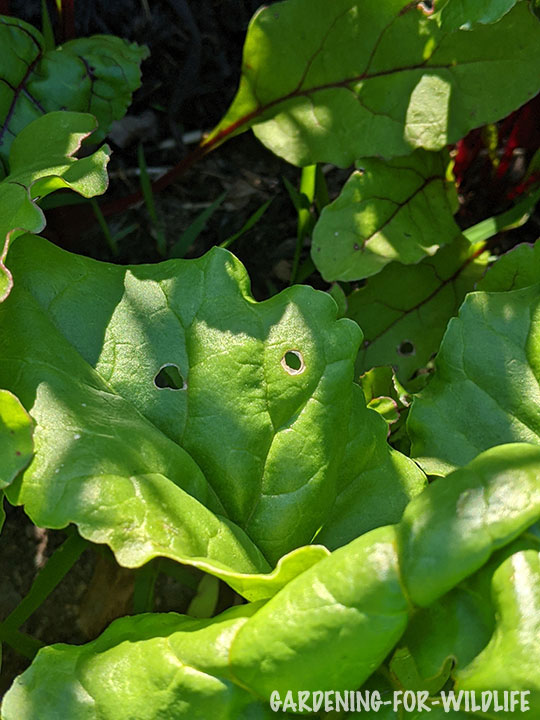
It is important to note that when one says “flea beetle” that is a generalization for an entire subfamily of beetles. Flea beetles can be found all over North America.
They are in the group of beetles known as leaf beetles. The family (Chrysomelidae) is very large with an estimated 37,000 species currently with many subfamilies, including the one to which flea beetles belong – Galerucinae. In general, both the adult and larvae of this subfamily of beetles feed on plant tissue, hence their notoriety as agricultural pests. The Colorado Potato Beetle is among flea beetles notable cousins.
Flea Beetle Life Cycles
The concept of knowing your enemy can be useful when working to control a garden pest. Understanding their lifecycle is an important part of this control.
If you remember your biology from grade school, the life stages of insects are egg hatching to larvae, with several stages of larval growth and finally maturing to an adult. The adult stage of flea beetles tends to be when they are most destructive, however some types do have larvae that will feed on the roots of young plants.
Flea Beetle adults will overwinter in leaf litter, wooded areas, and shrubby rows of hedges. They become active in early spring looking for food. Females will lay eggs at the base of young plants, in the soil, or on the leaves of young plants. When the larvae hatch, they can feed on roots, on the stem or leaves, or burrow into the plant itself, depending on the species.
After a couple of weeks, they pupate, or go into a state where they are no longer feeding but transitioning into adults. They emerge as adults in this same growing season, meaning there are two life cycles possible a season.
What Are Flea Beetles Attracted To?
In my experience in New England, flea beetles are attracted to plants in the brassica family and arugula. Most flea beetles cluster on a particular group of plants, though there are some types that aren’t as picky and generally eat what they can find. While I haven’t had problems with them attacking other plants to the point of crop loss, there are flea beetles known to be problematic on basil, beets beans, chard, peppers, spinach, eggplants, and the list actually goes on.
I would suggest contacting your local Cooperative Extension or County Agricultural agents my suggestions for controls later in the article are not helpful for you.
It is also good to know that they don’t like rain. Most flea beetles are known to retreat into the soil when it is raining. They tend to feed and do the most damage during dry weather and are most active during sunny days.
It is documented that they are attracted to stressed plants that aren’t getting enough nutrition, but also will eagerly feed on the tender leaves of new plants just emerging. Once plants are established, they tend to be able to fend off the impact from flea beetles unless they are out of control.
Which brings us to the key question this article is all about.
How to Get Rid of Flea Beetles
It is possible to organically control, if not eradicate, flea beetles through a combination of strategies including companion plantings, row covers, attracting beneficial insects, and dusting with diatomaceous earth.
1) Use Row Covers
I can’t encourage you to use row covers. While I deploy several strategies to control flea beetles, using row covers has been the game changer. Prior to using a cover, I could not get radish, cabbage, or broccoli to survive. I was a bit intimidated at first thinking row covers were more for professional growers and large-scale gardens and small farms. I was so wrong.
I created a wide row of about three feet that went the length of my garden, about 15 feet long. I planted three lines of radish in the first five feet, two lines of cabbage in the middle five feet, and two lines of broccoli in the last section. I made my own “hoops” by doubling heavy gauge galvanized wire long enough to go five inches into the ground on each side and still provide a top arc height of about 15” for the row.
No products found.
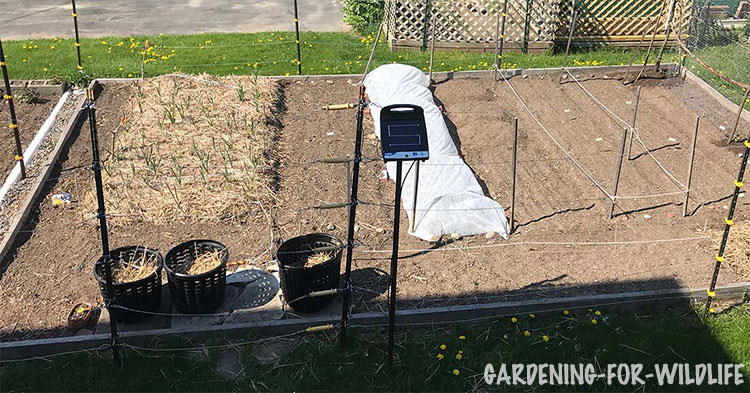
From a wide and long piece of Agribon-15, I cut size wide and long enough to go over the hoops. I used rocks and bricks to weight down the sides and clothespins to help tighten it over the wire. Agribon-15 will only block 15% of light and water making it a good choice in spring and summer.
- Multi-purpose wire ideal for workshop, garden, house and farm applications
- Galvanized steel wires are self tying, wrap around themselves and stay soft and flexible while keeping hands clean and cut free
Some covers are thicker and designed to hold in warmth in cooler weather but usually block more light and water. The lighter weight covers are fine as you just need a physical barrier to protect the plants.
The strategy with a row cover is to block access to the young plants coming up. I have found that early in the season, there is some benefit to the protective quality of the row cover for holding in warmth and moisture, almost like a mini greenhouse. Usually, I wait to remove the row covers until the plants are about 6” tall or more to be sure they are strong enough. At this point, I also bring in my other secret weapon, diatomaceous earth. More on that in a second.
I have found one downside to using row covers. Because I don’t want to expose the young seedlings to any adult flea beetles hopping about, I tend to not lift them at all for thinning or weeding. When I finally do pull them off, I then have to spend a significant amount of time “tidying” up the rows and carefully thinning.
Nevertheless, I now have the confidence to grow even multiple crops of cabbage and radish and feel I have conquered my earlier troubles with flea beetles. Yet, as I mentioned, row covers, while key, are just one part of a my multi-pronged strategy against flea beetles.
2) Apply Diatomaceous Earth
Diatomaceous earth my other secret weapon. Frankly, I use this all over my gardens, both vegetable and flower, to help with a variety of pests such as ants, aphids, snails, and slugs, in addition to flea beetles.
Diatomaceous earth is the pulverized remains of tiny, fossilized aquatic organisms called diatoms. Those skeletons contain a lot of silica, a very common mineral on the earth. As they die, their skeletons accumulate in the sediments of rivers, lakes, and streams.
It is not a poison or pesticide, but more of a mechanical means of control. Effective when it is dry, it absorbs the oils and fats from the cuticle of an insect’s outer layer, or exoskeleton. While to us it seems like a soft powder, the tiny ground particles are actually quite sharp and abrasive, helping it work faster to get at the oils. The insects then dry out and die, or at least are deterred.
- Natural Product - Composed of 5lbs of 100% ground freshwater diatomaceous earth with absolutely no additives or fillers.
- OMRI Listed - Listed with the Organic Minerals Research Institute, a non-profit organization that reviews products against organic standards.
Unfortunately, when diatomaceous earth gets wet it isn’t as effective. Therefore, if you have just watered, wait until the leaves and top of the soil have dried out before dusting. As with any product, you should personally research it and fully understand how to use it appropriately before using it.
Once I remove a row cover, I dust diatomaceous earth at the base of the plants and try to get a little on the underside of the leaves. You can also apply it to the tops of leaves, but I always worry too thick a layer can interfere with photosynthesis. For flea beetles, it is necessary to have some on the leaves. Remember, they are not crawling to get to your plant leaves but hopping onto them.
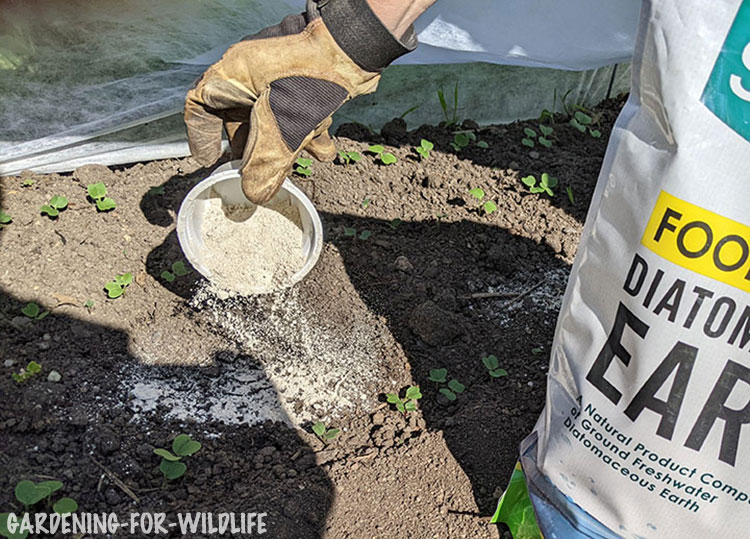
I try to dust in the evening when the weather is dry to minimize impacts on beneficial insects. Sometimes, for me, that isn’t possible since we can have foggy, cool nights and everything gets wet.
It is very important to read product labels and follow all directions for safe use. Because of its powdery nature and make up with silica, the label on the products I use direct me to wear gloves and protect my skin with pants and long sleeves and wear a dust mask.
3) Use Sticky Traps
Many sources suggest using sticky traps to control flea beetles. As they hop between plants, they inadvertently get stuck. I can confirm that sticky traps do work to control undesirable insects. When I have an infestation of cucumber beetles on cucumber and squash plants, I had to use this with lures to save my plants.
The problem is sticky traps don’t discriminate. Anything flying or hopping by gets stuck. This can include beneficial insects such as predatory wasps, predatory flies, honeybees, and even butterflies. Personally, I don’t recommend sticky traps as a first choice for this reason. I have found I no longer have to use them even for cucumber beetles because, I believe, my other strategies are working together to maintain a healthy balance in my gardens.
4) Plant Seeds Not Seedlings
Flea beetles emerge when the temperatures reach 50 degrees F (10 degrees Celsius), which is also when many of us plant seeds in the garden. If you have a greenhouse, garden room, or shed, you may want to get plants started early with some protection.
If you can grow up your seeds into stronger, somewhat established young plants and transplant them into your garden, the plants will have a better chance of surviving. Once transplanted, fertilize your young plants organically and keep them appropriately watered. Not only do flea beetles love newly emerged seedlings, they are also attracted to plants that are stressed.
You can also choose quick growing plant varieties that mature faster. Because my specific struggle was with radish, I have found a variety I love that goes from seed to harvest in about thirty days. Therefore, the plants get stronger quicker and able to handle the few flea beetles that I know are still around.
5) Plant a Trap Crop
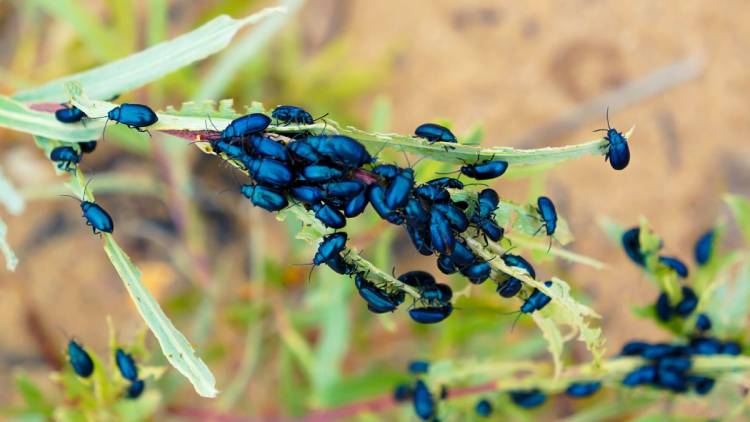
When you know the type of plants your local flea beetles love, you can grow what is known as a trap crop. The strategy is to lure them to an area of your yard where they have easy access to something you accept you will not be harvesting. Instead, you sacrifice those plants in an effort to grow other things they don’t like as much.
Hand-in-hand with use of a trap crop is then a method for killing the flea beetles that amass there. Otherwise, once they devour the trap crop, they may decide to move over to what else is in the neighborhood. There are many pesticides, some approved for organic gardening and some not, that can then target your trap crop.
My goal is to keep my garden organic and also minimize the number of products of any kind that I need to purchase and apply. For this reason, I haven’t found trap crops to be the best option for me. I did use the strategy one year, planting a few pots and buckets with a trap crop of arugula outside of my garden.
Perhaps because I wasn’t spraying the arugula, it didn’t really make a difference for me. I have found success with other things in this article, but you should experiment with what works best for you.
6) Use Companion Plantings for Deterrence
Instead of planting crops to attract flea beetles away from your garden, plant things that will repel them. Planting things such as nasturtium, basil, thyme, catnip, mint, or hyssop can work as companions to your other plants. They can attract pollinators and predatory insects as well as provide you with some wonderful cooking herbs.
From personal experience, I have planted anise hyssop outside my garden for its benefits. It produces a lovely purple flower head and is perennial, coming back every year to help me. However, it does spread. I’ve learned to transplant any volunteers in the garden to other areas.
Mint can also spread easily and many people will tell you once mint is established it is hard to remove. Just keep this in mind if you choose companion plants as a flea beetle control.
7) Prevent Overwintering Places
Clean garden debris to prevent places for flea beetles to hide and overwinter. If your garden area is not hospitable to them in winter, they will go to other places. This may help reduce their presence when you start your garden in spring, putting you in a better position from the beginning.
Natural Predators of Flea Beetles
Beneficial Insects
Predators of flea beetles include Braconid wasps, tachinid flies, and lacewings. It is the larval stage of these insects that will feed on the flea beetle. The adult stage of these insects are also predators, just on different types of insects. Soldier beetles and assassin bugs are two more of a variety of predator beneficial insects that can turn the tide of any flea beetle problem.
To encourage these lovely hunters into your garden, add plantings of cilantro, yarrow or dill, that produce umbels, or umbrella-shaped, flower heads. California poppies and marigolds will also help attract these beneficial insects.
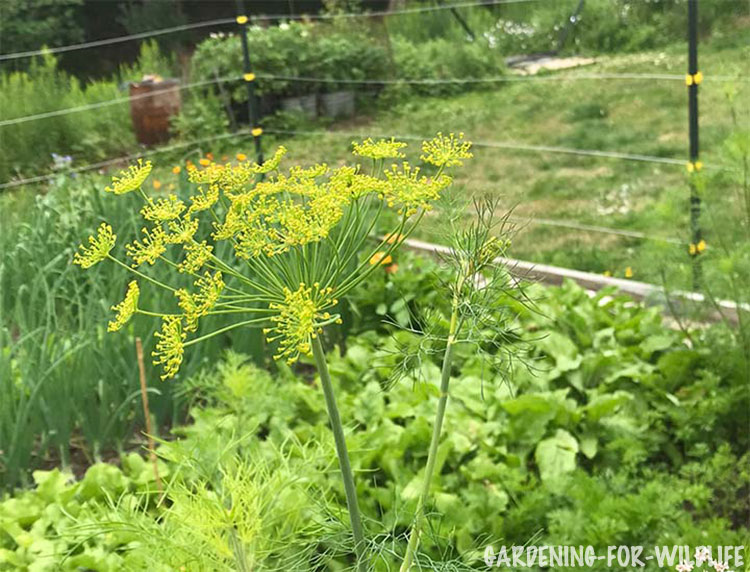
Some studies have shown that nematodes from the Steinernematidae and Heterorhabditidae families, microscopic roundworms living in the soil, can be predatory on flea beetle larvae. As the flea beetle eggs in the soil hatch, the nematodes prey on them before they can damage roots or grow into adults.
- Package Contains 30 million Live Nematodes
- Triple Blend Beneficial Nematodes HB+SC+SF
While these nematodes should normally be present in soil, it is possible to purchase them to augment their numbers in your garden soil. There was a recent study attempting to quantify their benefit specifically on flea beetles. While the power of nematodes to help with a variety of insect pests is well known, the study needs to be repeated for more conclusive evidence regarding flea beetles.
Birds That Eat Flea Beetles
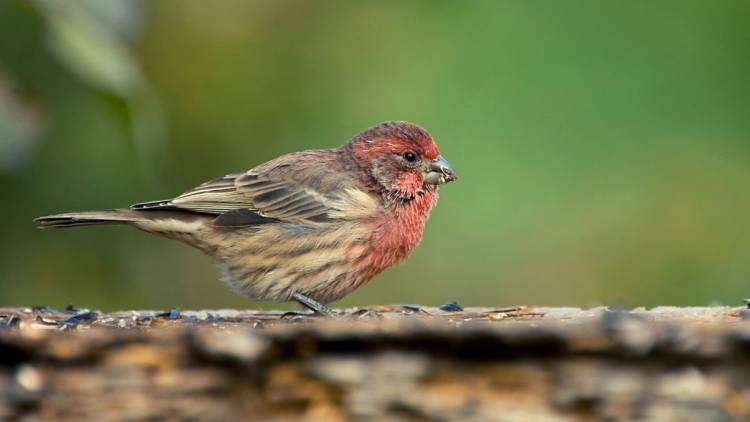
Let’s not forget that one of the best insect eaters out there are birds. Many birds common in your yards and neighborhoods are voracious insect eaters. Specifically for flea beetles, purple finches can be an amazing asset if you are lucky enough to live in areas they frequent.
While not found in the western part of the country or Rocky Mountains, purple finches can be found in the eastern, northeastern, and northern areas as well as the pacific coast of North America.
Additionally, many other birds including robins, chickadees, titmice, sparrows, and wrens will eat insects. Encourage them to come to your garden by putting out bird feeders, providing water sources, and installing bird houses where they can nest. You can enjoy watching them in your garden knowing they are working hard to keep the insect numbers down.
Summing Up How to Control Flea Beetles
While flea beetles can be a frustrating and damaging pest in your garden, controlling them is an achievable goal. There are a variety of options you can use to reduce or possibly eliminate flea beetles in your garden. One option on its own may or may not be enough for your own particular location.
Ideally, by adopting a few of the options mentioned above, you will be on your way to growing the crops you want without problems. Moreover, with companion planting and attracting beneficial insects and birds, you can improve the overall balance in your garden, and enjoy some tasty herbs and beautiful flowers.
What have your flea beetle frustrations been? Have you had luck getting rid of them? Let us know in the comments section.



